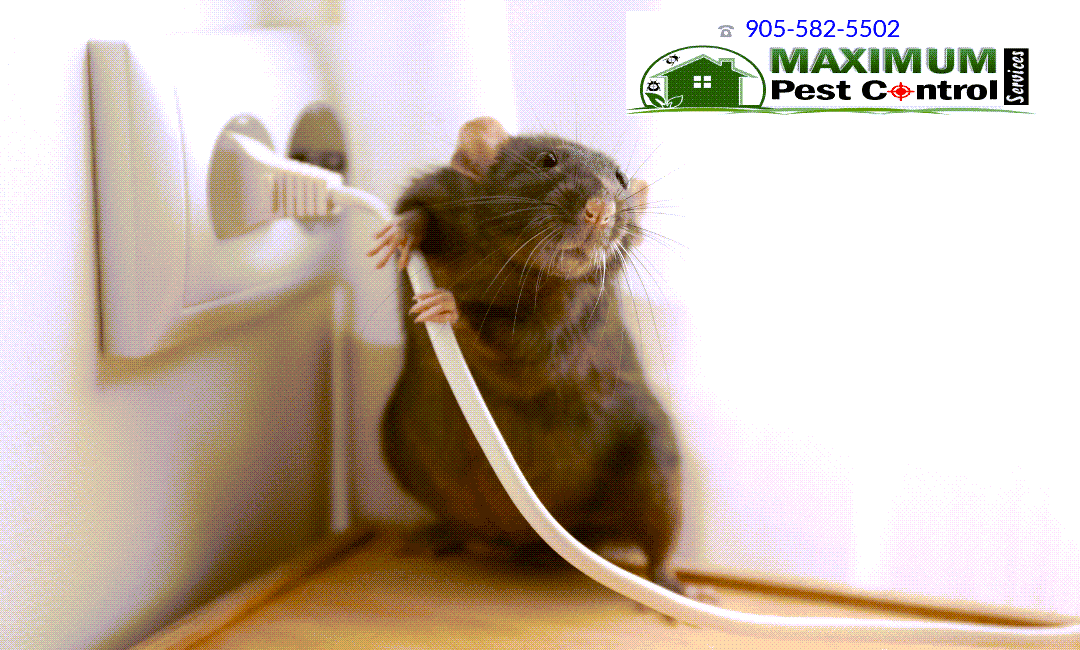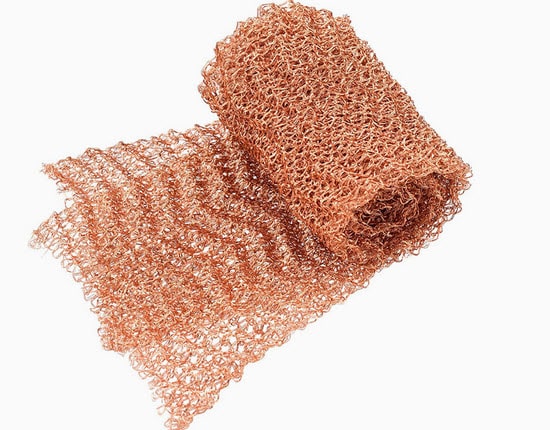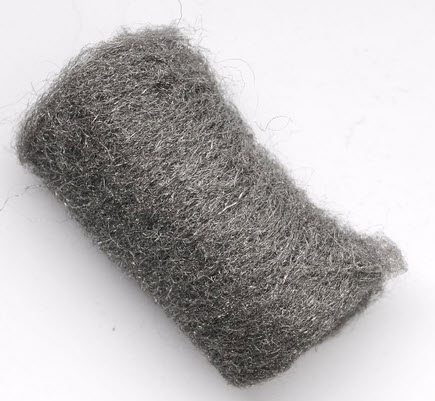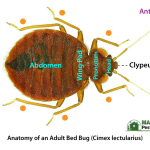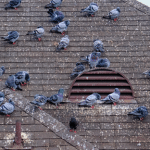
Copper Mesh Vs Steel Wool for Mice: Which is Better?
Struggling With Mice? Compare copper mesh and steel wool to find the best solution for your pest problem. Uncover The Facts Now!
Mice can turn your cozy home into their personal playground in no time. These sneaky critters squeeze through the tiniest gaps, setting up shop before you know it. But don’t worry – you’ve got options to stop them in their tracks.
Enter a world of copper mesh and steel wool, the dynamic duo of mouse-proofing materials. Both claim to be the best at keeping mice out. But which one really takes the crown? Let’s dive into the nitty-gritty of these pest-blocking champions. We’ll weigh their strengths and weaknesses to help you pick the perfect mouse barrier for your home.
Why Mice Are So Persistent
Mice are nature’s ultimate survivors. They breed faster and adapt to new spots in no time. Their tiny bodies can squeeze through the smallest cracks. That’s why they’re always popping up in homes and buildings.
These furry troublemakers have teeth that never quit growing. They chew on everything to keep those choppers in check. Mice can climb walls, swim across pipes, and jump pretty high. They’re always on the move, looking for their next meal or cozy hideout.
What makes mice so “darn “persistent? It’s a mix of smarts and pure instinct. They learn fast and remember where to find food. Their keen senses help them dodge danger. Mice existed around for millions of years. With their clever tricks and quick breeding, they’re not going anywhere soon.
Advantages of Copper Mesh
Copper mesh is a game-changer for many DIY projects. It’s tough, flexible, and easy to work with. You can cut it, shape it, and mold it to fit any space. Plus, it lasts for ages without rusting or falling apart.
One of the coolest things about copper mesh? It keeps pests away like magic. Rats, mice, and other critters can’t chew through it. That makes it perfect for plugging holes in walls or protecting your garden. It even stops those pesky snails and slugs! Copper mesh might be just the ticket. It’s a versatile material that’s hard to beat.
Disadvantages of Copper Mesh
Copper mesh might seem like a shiny solution for keeping mice out. But this metal marvel comes with its own set of problems
First off, copper corrodes over time, especially in damp areas. This weakens the mesh, creating potential entry points for sneaky mice.
Cost is another big drawback. Copper isn’t cheap. Covering all possible mouse entry points can burn a hole in your wallet. And installation? It’s no walk in the park. Getting that mesh into tight spots requires time and skill. For many homeowners, it’s just not worth the hassle or expense.
Advantages of Steel Wool
Steel wool packs a punch when it comes to keeping mice out. Rodents can’t chew through this tough material, making it a top choice for sealing entry points. Its flexibility lets you stuff it into odd-shaped gaps and cracks with ease.
But not all steel wool is created equal for this job. You’ll want to grab the coarse stuff, grade 3 or higher. This rougher texture irritates mice sensitive noses and paws, giving them another reason to steer clear. Plus, it won’t rust like finer grades might. Keep an eye out for any signs of gnawing or disturbance around your steel wool barriers.
Disadvantages of Steel Wool
Steel wool might seem like a miracle fix, but it’s not all sunshine and rainbows. This scratchy stuff can be a real pain to handle. You’ll want gloves unless you fancy a hand full of tiny metal splinters.
And let’s talk longevity – or lack thereof. Steel wool’s not exactly built to last. It’ll rust faster than you can say “mouse in the house” when exposed to moisture. That rusty mess? It can stain your walls and floors. Not exactly the look most folks are going for.
Here’s the kicker: steel wool’s not a one-and-done solution. Mice are clever critters. They might find ways around it or pull it out bit by bit. You’ll need to keep checking and replacing it. It’s a hassle, plain and simple. And in some spots, it might even pose a fire risk.
How Do They Compare in Preventing Mice From Entering?
Copper mesh and steel wool are both go-to solutions in the mouse-proofing game. Copper’s got the edge in durability, resisting rust like a champ. It’s pricier, but you won’t be replacing it as often as steel wool.
Steel wool’s the budget-friendly option, easy to find at any hardware store. It’s more flexible, squeezing into tight spots with ease. But it’ll rust faster than you can say “cheese,” especially in damp areas.
When it comes to deterring those pesky rodents, both materials get the job done. Mice can’t chew through either one. Copper mesh looks neater and lasts longer, while steel wool’s rougher texture might irritate little mouse paws more. Your choice depends on budget, location, and how often you want to check for wear and tear.
Which Material Is Easier to Use Against Mice?
Steel wool takes the cake for user-friendliness. You can tear it apart with your bare hands, no tools needed. It molds into odd shapes and tight spots like a dream. Just stuff it in and you’re good to go.
Copper mesh, on the other hand, requires a bit more elbow grease. You’ll need scissors or wire cutters to shape it. It’s stiffer than steel wool, making it trickier to work with in irregular gaps. But once it’s in place, it stays put better.
For quick fixes and DIY enthusiasts, steel wool’s the way to go. It’s forgiving if you make a mistake. Copper mesh shines in professional installations or when you want a more polished look. Both get the job done, but steel wool won’t make you break a sweat.
Environmental Sustainability Matters
When it comes to Eco-friendliness, copper mesh takes the lead. It’s recyclable and doesn’t shed microfibers like steel wool. Copper’s natural antimicrobial properties also mean less need for harsh chemicals in pest control.
Steel wool, while cheaper, isn’t winning any green awards. It rusts quickly, potentially leaching iron into soil and water. Its short lifespan means more frequent replacements, creating more waste over time. Plus, those tiny metal fibers can be harmful if ingested by wildlife.
Choosing between these materials? Consider the long-term impact. Copper mesh might cost more upfront, but its durability and recyclability make it greener. Steel wool’s a quick fix, but it’s not doing Mother Nature any favors. Your choice can make a difference, even in small-scale pest control.
Conclusion: Copper Mesh or Steel Wool?
Choosing between copper mesh and steel wool boils down to your specific needs. Copper mesh wins for longevity and Eco-friendliness. It’s the go-to for damp areas or long-term solutions. Steel wool shines in quick fixes and tight budgets.
Consider your skill level too. Steel wool’s easier to work with for DIY projects. Copper mesh might need a steadier hand but offers a cleaner look. Both keep mice at bay, so you can’t go wrong either way.
Ultimately, the best choice combines multiple methods for maximum protection. Mix materials, seal entry points, and keep your space clean. For top-notch pest control, don’t stop at just one solution. Take action now! Assess your home, grab your chosen material, and start mouse-proofing today.

